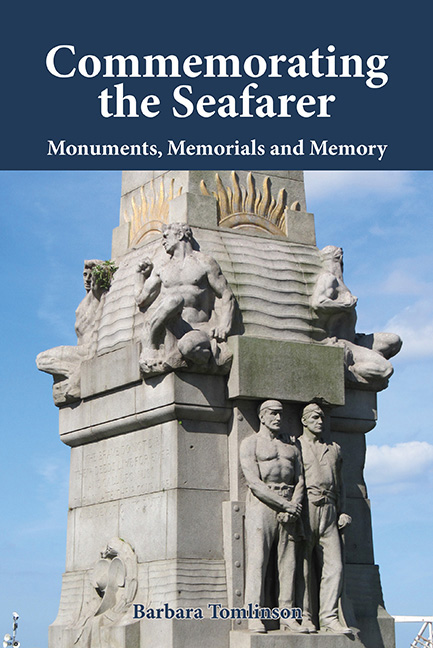Book contents
- Frontmatter
- Dedication
- Contents
- Illustrations
- Preface
- Acknowledgements
- Introduction
- 1 Shifting Loyalties: Naval Memorials, 1628–783
- 2 The Age of Heroes: Naval Memorials, 1783–815
- 3 Pax Britannica: Naval Memorials, 1815–914
- 4 Stormy Weather: Conflict and Sacrifice in the Twentieth Century
- 5 Commerce and Philanthropy: Mercantile Commemoration
- 6 Lost at Sea: Maritime Accidents
- 7 Maritime Explorers: Drake to Shackleton
- 8 Inshore: Fishermen, Lifesavers and Leisure
- Conclusion
- Bibliography
- Index
2 - The Age of Heroes: Naval Memorials, 1783–815
Published online by Cambridge University Press: 08 May 2021
- Frontmatter
- Dedication
- Contents
- Illustrations
- Preface
- Acknowledgements
- Introduction
- 1 Shifting Loyalties: Naval Memorials, 1628–783
- 2 The Age of Heroes: Naval Memorials, 1783–815
- 3 Pax Britannica: Naval Memorials, 1815–914
- 4 Stormy Weather: Conflict and Sacrifice in the Twentieth Century
- 5 Commerce and Philanthropy: Mercantile Commemoration
- 6 Lost at Sea: Maritime Accidents
- 7 Maritime Explorers: Drake to Shackleton
- 8 Inshore: Fishermen, Lifesavers and Leisure
- Conclusion
- Bibliography
- Index
Summary
The Great War with France was the apogee of British naval success but it began with a failure: in 1783 the Treaty of Paris sealed the foundation of the United States and the loss to Great Britain of many of her North American colonies. However, George Rodney's victory at the Battle of the Saints, fought to the north of Dominica on 12 April 1782, following a preliminary action closer in on the 9th, ensured she retained her valuable sugar-producing islands in the West Indies. The wider European involvement in the American war left France with crippling government debt, which would sow the seeds of future revolution.
On 22 May, Charles James Fox, in his brief tenure as Foreign Secretary, proposed that the House of Commons present their thanks to Rodney; after various members had proposed thanks to other officers: ‘Mr B. Gascoigne said that all the Living had been attended to, but he wished that some Regard should be paid to the Dead.’ His motion that Captains Bayne and Blair, killed in Rodney's actions, and also Captain Robert Manners, who died later of his wounds, should be commemorated by publicly funded monuments erected in Westminster Abbey was suitably rephrased to state their dates of death correctly and passed the following day. His seconder, Sir Grey Cooper, mentioned the precedent of the monument to Captain Cornwall, of ‘inferior rank’ like Bayne, Blair and Manners, but unlike them killed in the course of a British defeat. The three men were the highest-ranking British casualties of the actions concerned
Through the Royal Academy, founded fourteen years earlier, Joseph Nollekens (1737–1825) was appointed to undertake the commission at a cost of £4500, later reduced to £3500. The three casualties were to be commemorated by a single monument on which each individual was represented by a portrait in relief. In one of Nollekens's earlier designs, Fame with her attribute of the trumpet is placed in the centre, flanked by a seated Britannia on the right and on the left by Neptune about to plunge his trident into a prostrate woman representing France. The enemy figure holds an empty box representing the state of the French treasury (fig. 15).
- Type
- Chapter
- Information
- Commemorating the SeafarerMonuments, Memorials and Memory, pp. 36 - 64Publisher: Boydell & BrewerPrint publication year: 2015



